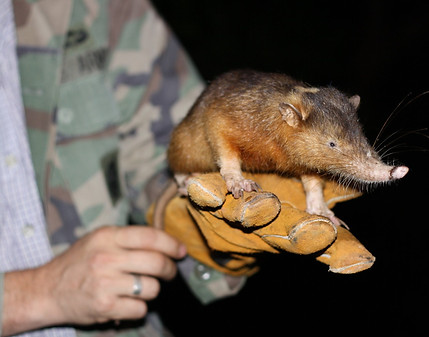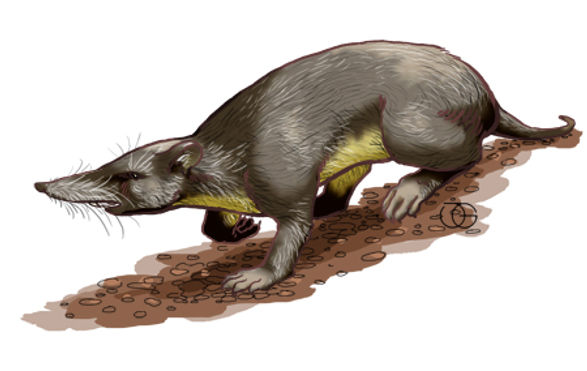Creature
Fast Facts
Introducing you to extinct species.

THE PUERTO RICAN
NESOPHONTES/SHREW
1. The Puerto Rican nesophontes, Nesophontes edithae, was also known as the Puerto Rican shrew. 2. Based on sub-fossil evidence the Puerto Rican nesophontes was the largest of the 8 species of nesophontes, weighing 7.1 oz & was the size of a lab rat. 3. They lived in the high montane forests of western Puerto Rico. 4. The neophontes were insectivores. 5. There are sub-fossils of this species in London. 6. It was never directly observed by Europeans, but there's evidence the nesophontes lived into the early 1500's. 7. They had a long, narrow skull and a flexible snout. 8. They had 5 fingers and five toes. 9. Since the Puerto Rican nesophontes were most closely related to the solenodon, they may have also been a venomous mammal.
Extinction
Cometh
Facing the light at the end of the tunnel
EXTINCTION DATE
1500's
The Puerto Rican shrew was never directly observed by Europeans. In fact, all 8 species of nesophontes are known only from sub-fossils found on their respective Caribbean islands. Owl pellets collected from Puerto Rico from that time show evidence of nesophontes and European rats. This seems to indicate that the invasive rats led to the extinction of the Puerto Rican shrew soon after their arrival. Although Jurassic Park is fiction, scientists are working on several de-extinction projects. In fact, in 2003 scientists did bring back the extinct Pyrenean ibex, a type of wild goat, for 7 minutes before it died, showing de-extinction is possible. Scientists could use DNA from the sub-fossils and bones collected in old owl pellets. Many efforts are being made to protect & restore habitat in Puerto Rico. In 2021, the U.S. The Department of Agriculture began to expand the protected forest area by working with local farmers. El Yunque National Forest is the only tropical forest in the U.S. National Forest System. If the Puerto Rican nesophontes was brought back to life, could they ever be reintroduced to its native homelands in Puerto Rico?
COMING SOON
The Puerto Rican shrew's Lazarus tales have yet to be written, but what adventures will await them when they return to Puerto Rico? Stay tuned to find out.
More to Explore
All answers lead to more questions

The Puerto Rican nesophontes skull collected in St. Thomas
Image from Research Gate
The Puerto Rican nesophontes was a shrew-like animal that lived on several islands in the Caribbean
Image from Wikipedia

The Nesophontes were a distinct group of rodents most similar to Solenodons
Image from Research Gate

Recreation of the nesophontes from the Dominican Republic
Image from Daily Mail

A drawing of the nesophontes
Image from Fossil Matter

Puerto Rico flag
Image from Fine Art America

A map of Puerto Rico
Image from World Atlas

Distribution of the extinct nesophontes
Image from Research Gate

Nesophontes cartoon
Image from Scribblenauts

Stamp of the Cuban
Nesophontes micros
Image from Shutterstock

Nesophontes:
Los Misteriosos display
Image from Museo
Natural RD - Twitter

The Hispaniolan solenodon is the closest living relative of the extinct nesophontes
Image from New York Times

The Cuban solenodon was thought to be extinct until it was rediscovered in 1974
Image from Hokkaido University

Solenodon facts
Image from Peppermint Narwhal




